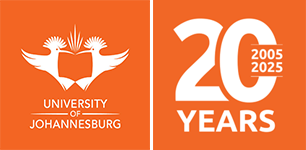The Golden Age of Mining
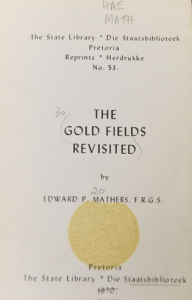
The Goldfields revisited
by Edward P Mathers
The 19th century saw a surge in gold prospecting and South Africa, especially the former Transvaal, was the place to be if you wanted to make your fortune. One of the people who believed that South Africa possessed the richest ore deposits in the world and recorded those heady times was newspaper man Edward P Mathers.
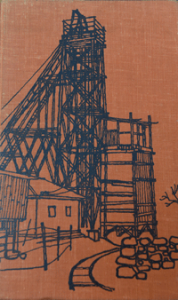
Goud vir die soeker : die verhaal van die mense van die Boshoff-myne
by Piet Meiring
Gold for the prospector (Goud vir die soeker) is the story of the first mining company owned by an Afrikaner, Willem Boshoff. It tells the story of the company’s history from 1933 – 1963. Willem Boshoff is not only famous for being the first Afrikaner to own a mining company but also for the novel “Boshoff method of reclamation”.
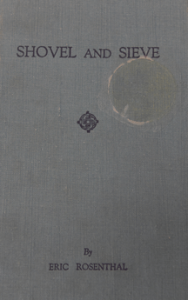
Shovel and sieve
by Eric Rosenthal
Who were Jacques Lebaudy, Carl Hanau, Carl Mauch and James Pratt? They and many others were once well-known but now largely forgotten men who lived in or were associated with Johannesburg, the Witwatersrand and gold. Eric Rosenthal brings them to life in this delightful book.
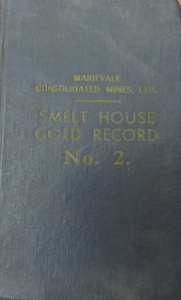
The Grootvlei and Marievale gold registers
The Grootvlei and Marievale mines are in the East Rand Basin near Springs which is part of the Witwatersrand Gold Fields. This area was initially mined for coal. In 1908 the first gold mining began in Springs and for a time Springs was considered the highest gold producing area in the world.
The Special Collections acquired seven hand-written registers. These meticulously-kept records provide valuable information for the researcher.
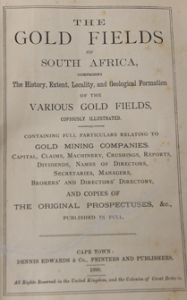
The Gold fields of South Africa
by Dennis Edwards & Co.
Published in 1890, this book provides a “mine” of information on mining and business in the barely four-year old city.The book contains an alphabetical list of gold mining company directors and gold mining companies that were in existence in 1890. Many have disappeared or been incorporated by other companies.
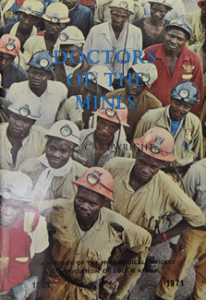
Doctors of the mines by A P Cartwright
In 1971 the Mine Medical Officers’ Association brought out a book to celebrate its 50 years of existence.
This organisation was formed by the mine-appointed medical officers whose job it was to care for the physical health of the black mine workers. In 1971 400 000 mine workers from South Africa, Lesotho, Botswana, Malawi, Swaziland and Mozambique crushed 80 million tons of rock to produce (in those days) R178 million worth of gold.
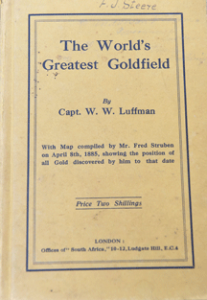
The World’s greatest goldfield
by Capt. W W Luffman
Fred Struben found gold on the farm Wilgespruit owned by Louw Geldenhuys, who had invited him to prospect for gold on his farm, in what is now Roodepoort. He named the mine Confidence Reef, a reflection of his belief that he had found payable gold. But the gold ran out after a year. Although Fred had not discovered the main reef, it was two of his and his brother Harry’s workmen: George Harrison and George Walker who discovered the main reef in the first quarter of 1886.
This little gem, which tells the early history of the discovery of gold, is signed by Fred Struben himself.
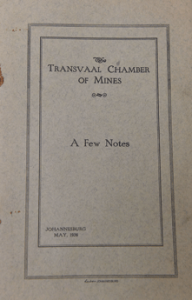
The Transvaal Chamber of Mines: a few notes
The Transvaal Chamber of Mines, a mining-industry employer organisation, was established in 1889. This short booklet, published in 1936, describes the history, structure and function of the Transvaal Chamber of Mines and its subsidiary organisations: The Witwatersrand Native Labour Association, Ltd. (one of TEBA’s precursors), The Native Recruiting Corporation, Ltd. (the other TEBA precursor), The Rand Refinery, Ltd., The Witwatersrand Smelting Works, Ltd., The Government Miners’ Training Schools, The Transvaal Miners’ Phthisis Sanatorium and The Chamber of Mines Building Company, Ltd
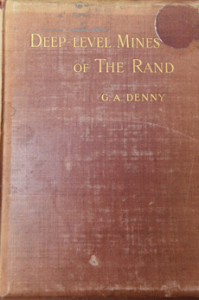
In 1902 Denny wrote the following: “To the writer’s mind, the future of these Fields is bound up with the exploration and development of the deeper levels of the Main Reef series; and while not losing sight of the very ample room for expansion still available on the Outcrop Mines, ……. He therefore confines himself in this volume to the consideration of the future of the Deep-level Mines of the Rand.”
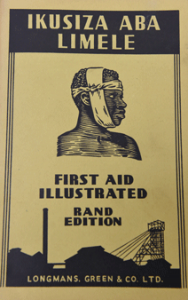
It is a truism that in an accident or medical emergency, the provision of correct first aid saves lives. This is especially true in the mines and the Mine Medical Officers’ Association brought out the first First Aid manual for black miners in 1930. Many black miners at that stage had low literacy levels and it was important that they could understand the manual. Students of language and communication as well as first aid will find these editions of the First Aid manual of great interest.
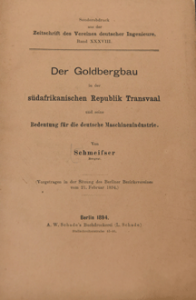
Gold mining in the South African Transvaal Republic and its meaning for the German machine industry.
This separately-published article from the Zeitschrift des Vereines deutscher Ingenieurs (Journal of the Association of German Engineers) published in 1894 looks at the effect that the burgeoning South African gold mining was having and would have on Germany.
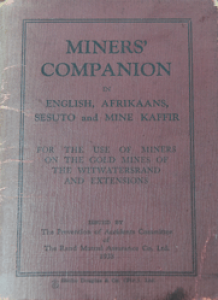
Fanagalo is a pidgin (simplified language) based primarily on Zulu, with English and a small Afrikaans input. It is used as a lingua franca, mainly in the gold, diamond, coal and copper mining industries in South Africa and to a lesser extent in the Democratic Republic of the Congo, Namibia, Zambia, and Zimbabwe. Although it is used as a second language only, the number of speakers was estimated as “several hundred thousand” in 1975. As English became the lingua franca enabling different tribes in the same country to communicate with each other, Fanagalo use declined.
